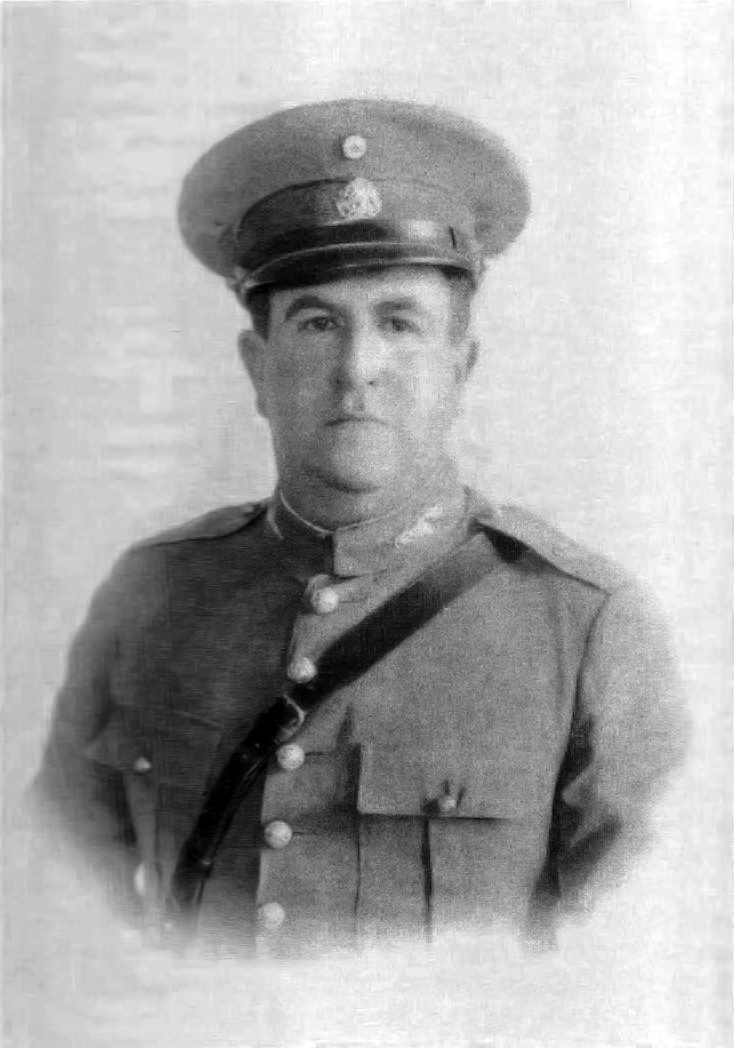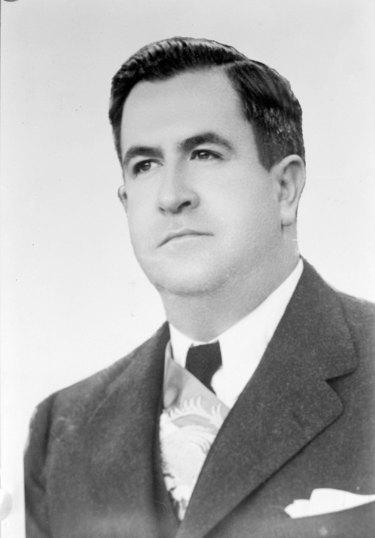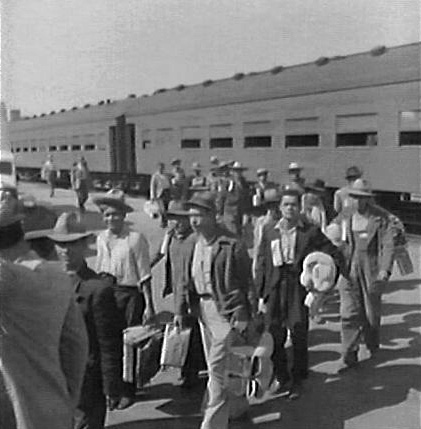Manuel Ávila Camacho on:
[Wikipedia]
[Google]
[Amazon]
Manuel Ávila Camacho (; 24 April 1897 – 13 October 1955) was a Mexican politician and military leader who served as the
 He joined the revolutionary army in 1914 as a second lieutenant and reached the rank of colonel by 1920. The same year, he served as the chief of staff of the state of
He joined the revolutionary army in 1914 as a second lieutenant and reached the rank of colonel by 1920. The same year, he served as the chief of staff of the state of

 Camacho, a professed
Camacho, a professed
 He protected the working class by creating the
He protected the working class by creating the


 During his term, Camacho faced the difficulty of governing during
During his term, Camacho faced the difficulty of governing during
President of Mexico
The president of Mexico ( es, link=no, Presidente de México), officially the president of the United Mexican States ( es, link=no, Presidente de los Estados Unidos Mexicanos), is the head of state and head of government of Mexico. Under the Co ...
from 1940 to 1946. Despite participating in the Mexican Revolution
The Mexican Revolution ( es, Revolución Mexicana) was an extended sequence of armed regional conflicts in Mexico from approximately 1910 to 1920. It has been called "the defining event of modern Mexican history". It resulted in the destruction ...
and achieving a high rank, he came to the presidency of Mexico because of his direct connection to General Lázaro Cárdenas
Lázaro Cárdenas del Río (; 21 May 1895 – 19 October 1970) was a Mexican army officer and politician who served as president of Mexico from 1934 to 1940.
Born in Jiquilpan, Michoacán, to a working-class family, Cárdenas joined the M ...
and served him as a right-hand man as his Chief of his General Staff during the Mexican Revolution and afterwards. He was called affectionately by Mexicans "The Gentleman President" ("El Presidente Caballero"). As president, he pursued "national policies of unity, adjustment, and moderation." His administration completed the transition from military to civilian leadership, ended confrontational anticlericalism, reversed the push for socialist education, and restored a working relationship with the US during World War II
World War II or the Second World War, often abbreviated as WWII or WW2, was a world war that lasted from 1939 to 1945. It involved the vast majority of the world's countries—including all of the great powers—forming two opposin ...
.
Early life
Manuel Ávila was born inTeziutlán
Teziutlán is a city in the northeast of the Mexican state of Puebla. Its 2005 census population was 60,597. It also serves as the municipal seat for the surrounding Teziutlán Municipality. The municipality has an area of 84.2 km2 (32.51 ...
, a small but economically important town in Puebla
Puebla ( en, colony, settlement), officially Free and Sovereign State of Puebla ( es, Estado Libre y Soberano de Puebla), is one of the 32 states which comprise the Federal Entities of Mexico. It is divided into 217 municipalities and its cap ...
, to middle-class parents, Manuel Ávila Castillo and Eufrosina Camacho Bello. His older brother, Maximino Ávila Camacho
Maximino Ávila Camacho (1891 in Teziutlán, Puebla – 1945 in Mexico City) was a Constitutionalist Army officer in the Mexican Revolution and afterwards politician who served as governor of Puebla from 1937 to 1941 and as secretary of P ...
, was a more dominant personality. There were several other siblings, among them a sister, María Jovita Ávila Camacho, and several brothers. Two of his brothers, Maximino Ávila Camacho and Rafael Ávila Camacho, served as governors of Puebla.
Manuel Ávila Camacho did not receive a university degree although he studied at the National Preparatory School
The Escuela Nacional Preparatoria ( en, National Preparatory High School) (ENP), the oldest senior High School system in Mexico, belonging to the National Autonomous University of Mexico (UNAM), opened its doors on February 1, 1868. It was founde ...
.
Early career
Michoacán
Michoacán, formally Michoacán de Ocampo (; Purépecha: ), officially the Free and Sovereign State of Michoacán de Ocampo ( es, Estado Libre y Soberano de Michoacán de Ocampo), is one of the 32 states which comprise the Federal Entities of ...
under Lázaro Cárdenas
Lázaro Cárdenas del Río (; 21 May 1895 – 19 October 1970) was a Mexican army officer and politician who served as president of Mexico from 1934 to 1940.
Born in Jiquilpan, Michoacán, to a working-class family, Cárdenas joined the M ...
and became his close friend. He opposed the 1923 rebellion of former revolutionary general Adolfo de la Huerta
Felipe Adolfo de la Huerta Marcor (; 26 May 1881 – 9 July 1955) was a Mexican politician, the 45th President of Mexico from 1 June to 30 November 1920, following the overthrow of Mexican president Venustiano Carranza, with Sonoran generals ...
. In 1929, he fought under General Cárdenas against the Escobar Rebellion, the last serious military rebellion of disgruntled revolutionary generals, and the same year, he achieved the rank of brigadier general
Brigadier general or Brigade general is a military rank used in many countries. It is the lowest ranking general officer in some countries. The rank is usually above a colonel, and below a major general or divisional general. When appointed ...
.
He was married to Soledad Orozco García (1904–1996), who was born in Zapopan, Jalisco
Zapopan () is a city and municipality located in the Mexican state of Jalisco. Part of the Guadalajara Metropolitan Area, the population of Zapopan city proper makes it the second largest city in the state, very close behind the population of G ...
, and was a member of a prominent family in Jalisco.
After his military service, Ávila Camacho entered the public arena in 1933 as the executive officer of the Secretariat of National Defense and became Secretary of National Defense in 1937. In 1940, he was elected president of Mexico after he had been nominated to represent the party that later became the Institutional Revolutionary Party
The Institutional Revolutionary Party ( es, Partido Revolucionario Institucional, ; abbr. PRI) is a political party in Mexico that was founded in 1929 and held uninterrupted power in the country for 71 years, from 1929 to 2000, first as the Nati ...
.
Camacho won the controversial presidential election over right-wing candidate and revolutionary-era General Juan Andreu Almazán
Juan Andreu Almazán (May 12, 1891 – October 9, 1965) was a Mexican revolutionary general, politician and businessman. He held high posts in the Mexican Army in the 1920s and ran for the presidency of Mexico in 1940 in a highly disputed elect ...
.
Presidency
End of conflict between church and state

 Camacho, a professed
Camacho, a professed Catholic
The Catholic Church, also known as the Roman Catholic Church, is the largest Christian church, with 1.3 billion baptized Catholics worldwide . It is among the world's oldest and largest international institutions, and has played a ...
, said, "I am a believer." Since the revolution, all presidents had been anticlerical
Anti-clericalism is opposition to religious authority, typically in social or political matters. Historical anti-clericalism has mainly been opposed to the influence of Roman Catholicism. Anti-clericalism is related to secularism, which seeks to ...
. During Camacho's term, the conflict between the Roman Catholic Church in Mexico
, native_name_lang =
, image = Catedral_de_México.jpg
, imagewidth = 250px
, alt =
, caption = The Mexico City Metropolitan Cathedral.
, abbreviation =
, type = ...
and the Mexican government largely ended.
Domestic policy
 He protected the working class by creating the
He protected the working class by creating the Mexican Social Security Institute
The Mexican Institute of Social Security ( es, Instituto Mexicano del Seguro Social, IMSS) is a governmental organization that assists public health, pensions and social security in Mexico operating under the Secretariat of Health. It also forms ...
(IMSS) in 1943. He worked to reduce illiteracy, continued land reform, and declared a rent freeze to benefit low-income citizens.
He promoted election reform and passed a new electoral law passed in 1946 to make it difficult for opposition parties of the far right and the far left to operate legally. The law established the following criteria that had to be fulfilled by any political organization to be recognized as a political party:
* have at least 10,000 active members in 10 states;
* exist for at least three years before elections;
* agree with the principles established in the constitution;
* not form alliances or be subordinated to international organizations or foreign political parties.
On 18 January 1946, he had the Party of the Mexican Revolution (PRM) renamed to the Institutional Revolutionary Party
The Institutional Revolutionary Party ( es, Partido Revolucionario Institucional, ; abbr. PRI) is a political party in Mexico that was founded in 1929 and held uninterrupted power in the country for 71 years, from 1929 to 2000, first as the Nati ...
(PRI), its current name. The Mexican army had been a sector of the PRM, but it was eliminated from the organization of the PRI.
Economically, he pursued the country's industrialization, which benefited only a small group, and income inequality increased.
World War II stimulated Mexican industry, which grew by approximately 10% annually between 1940 and 1945, and Mexican raw materials fueled the US war industry.
In agriculture, his administration invited the Rockefeller Foundation
The Rockefeller Foundation is an American private foundation and philanthropic medical research and arts funding organization based at 420 Fifth Avenue, New York City. The second-oldest major philanthropic institution in America, after the Carneg ...
to introduce Green Revolution
The Green Revolution, also known as the Third Agricultural Revolution, was a period of technology transfer initiatives that saw greatly increased crop yields and agricultural production. These changes in agriculture began in developed countrie ...
technology to bolster Mexico's agricultural productivity.
In education, Camacho reversed Lázaro Cárdenas's policy of socialist education in Mexico and had the constitutional amendments that mandated it repealed.
Foreign policy


 During his term, Camacho faced the difficulty of governing during
During his term, Camacho faced the difficulty of governing during World War II
World War II or the Second World War, often abbreviated as WWII or WW2, was a world war that lasted from 1939 to 1945. It involved the vast majority of the world's countries—including all of the great powers—forming two opposin ...
. After two of Mexico's ships ( Potrero del Llano and Faja de Oro
SS ''Faja de Oro'' ("Strip of Gold", which is a petroleum rich area in Mexico) was an oil tanker built in 1914. She sailed for a number of companies, and survived service in the First World War, only to be torpedoed and sunk by a German submarine ...
) carrying oil were destroyed by German submarines
A submarine (or sub) is a watercraft capable of independent operation underwater. It differs from a submersible, which has more limited underwater capability. The term is also sometimes used historically or colloquially to refer to remotely o ...
in the Gulf of Mexico
The Gulf of Mexico ( es, Golfo de México) is an oceanic basin, ocean basin and a marginal sea of the Atlantic Ocean, largely surrounded by the North American continent. It is bounded on the northeast, north and northwest by the Gulf Coast of ...
, Camacho declared war against the Axis powers
The Axis powers, ; it, Potenze dell'Asse ; ja, 枢軸国 ''Sūjikukoku'', group=nb originally called the Rome–Berlin Axis, was a military coalition that initiated World War II and fought against the Allies. Its principal members were ...
on 22 May 1942. Mexican participation in World War II was mainly limited to an airborne squadron, the 201st (''Escuadrón 201''), to fight the Japanese in the Pacific. The squadron consisted of 300 men, and after receiving training in Texas, it was sent to the Philippines on 27 March 1945. On 7 June 1945, its missions started, and the squadron participated in the Battle of Luzon
The Battle of Luzon ( tl, Labanan sa Luzon; ja, ルソン島の戦い; es, Batalla de Luzón) was a land battle of the Pacific Theater of Operations of World War II by the Allied forces of the U.S., its colony the Philippines, and allies agai ...
. By the end of the war, 5 Mexican soldiers had lost their lives in combat. Despite its short participation in the war, Mexico belonged to the victorious nations and had thus gained the right to participate in the postwar international conferences.
Mexico's joining the conflict on the side of the Allies improved relations with the United States. Mexico provided both raw material for the conflict and also 300,000 guest workers under the Bracero program to replace some of the Americans who had left to fight in the war. Mexico also resumed diplomatic relations with the United Kingdom
The United Kingdom of Great Britain and Northern Ireland, commonly known as the United Kingdom (UK) or Britain, is a country in Europe, off the north-western coast of the continental mainland. It comprises England, Scotland, Wales and North ...
and the Soviet Union
The Soviet Union,. officially the Union of Soviet Socialist Republics. (USSR),. was a transcontinental country that spanned much of Eurasia from 1922 to 1991. A flagship communist state, it was nominally a federal union of fifteen national ...
, which had been broken off during the presidency of Lázaro Cárdenas
Lázaro Cárdenas del Río (; 21 May 1895 – 19 October 1970) was a Mexican army officer and politician who served as president of Mexico from 1934 to 1940.
Born in Jiquilpan, Michoacán, to a working-class family, Cárdenas joined the M ...
. In 1945, Mexico signed the United Nations Charter
The Charter of the United Nations (UN) is the foundational treaty of the UN, an intergovernmental organization. It establishes the purposes, governing structure, and overall framework of the UN system, including its six principal organs: the ...
, and in 1946, it became the headquarters of the Inter-American Conference about War and Peace.
Conflicts with the United States, which had existed in the decades before his presidency, were resolved. Especially in the early years of World War II, Mexican-American relations were excellent. The United States provided Mexico with financial aid for improvements on the railway system and the construction of the Pan American Highway. Moreover, the Mexican foreign debt was reduced.
Later life
When his term ended in 1946, Camacho retired to work on his farm.Camp, "Manel Avila Camacho", p. 244.Awards
* 1945,Order of Propitious Clouds
The Order of Propitious Clouds () is a civilian order of the Republic of China (Taiwan). The center of the medal features a picture of clouds, as a token of auspiciousness. This order was instituted in 1941 and classified into nine ranks. As with ...
with Special Grand Cordon from the Republic of China
Taiwan, officially the Republic of China (ROC), is a country in East Asia, at the junction of the East and South China Seas in the northwestern Pacific Ocean, with the People's Republic of China (PRC) to the northwest, Japan to the northeast ...
* Poland (in exile): Order of the White Eagle
See also
*List of heads of state of Mexico
The Head of State of Mexico is the person who controls the executive power in the country. Under the Political Constitution of the United Mexican States, current constitution, this responsibility lies with the President of Mexico, President of the ...
References
Further reading
* Camp, Roderic Ai. ''Mexican Political Biographies''.Tucson
, "(at the) base of the black ill
, nicknames = "The Old Pueblo", "Optics Valley", "America's biggest small town"
, image_map =
, mapsize = 260px
, map_caption = Interactive map ...
, Arizona
Arizona ( ; nv, Hoozdo Hahoodzo ; ood, Alĭ ṣonak ) is a state in the Southwestern United States. It is the 6th largest and the 14th most populous of the 50 states. Its capital and largest city is Phoenix. Arizona is part of the Fou ...
: University of Arizona
The University of Arizona (Arizona, U of A, UArizona, or UA) is a public land-grant research university in Tucson, Arizona. Founded in 1885 by the 13th Arizona Territorial Legislature, it was the first university in the Arizona Territory.
T ...
, 1982.
* Krauze, Enrique. ''Mexico: Biography of Power''. New York: HarperCollins 1997, chapter 17: "Manuel Ávila Camacho: The Gentleman President", pp. 491–525.
* Medina, Luis. ''Historia de la Revolución Mexicana, periodo 1940-1952: Del cardenismo al avilacamachismo''. Mexico City: Colegio de México 1978.
External links
* , - , - {{DEFAULTSORT:Avila Camacho, Manuel Presidents of Mexico Mexican generals Mexican Secretaries of Defense World War II political leaders 1897 births 1955 deaths Institutional Revolutionary Party politicians * Mexican Roman Catholics Politicians from Puebla 1940s in Mexico 20th-century Mexican politicians Recipients of the Order of Propitious Clouds People from Teziutlán Recipients of the Order of the White Eagle (Poland)